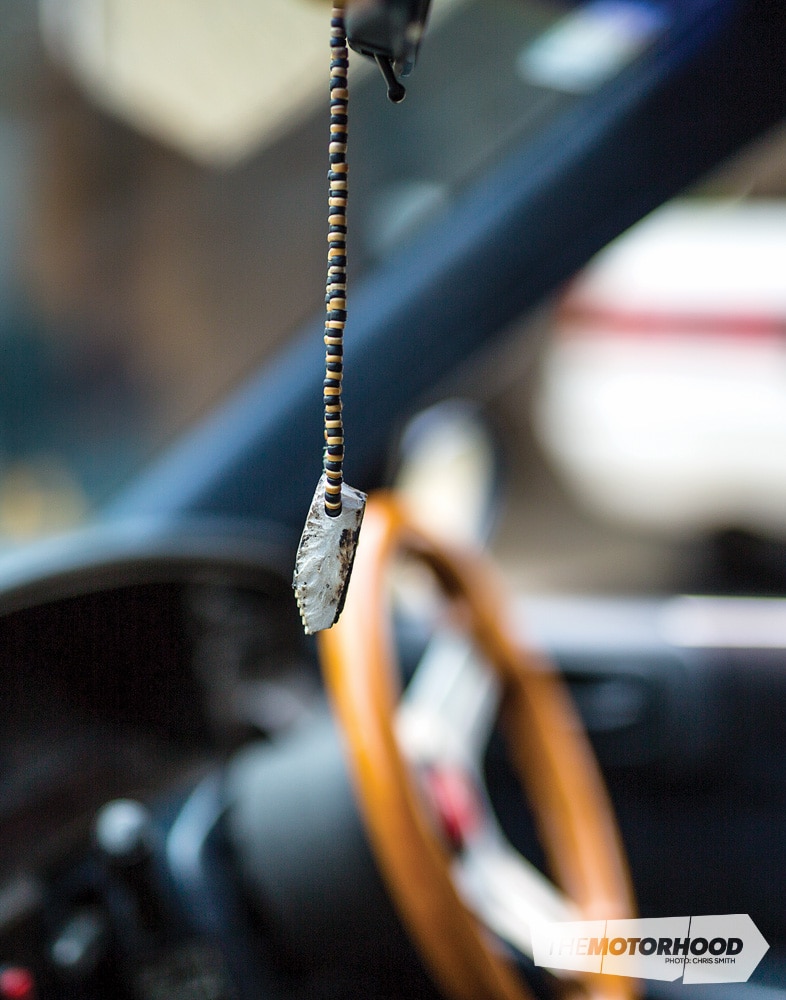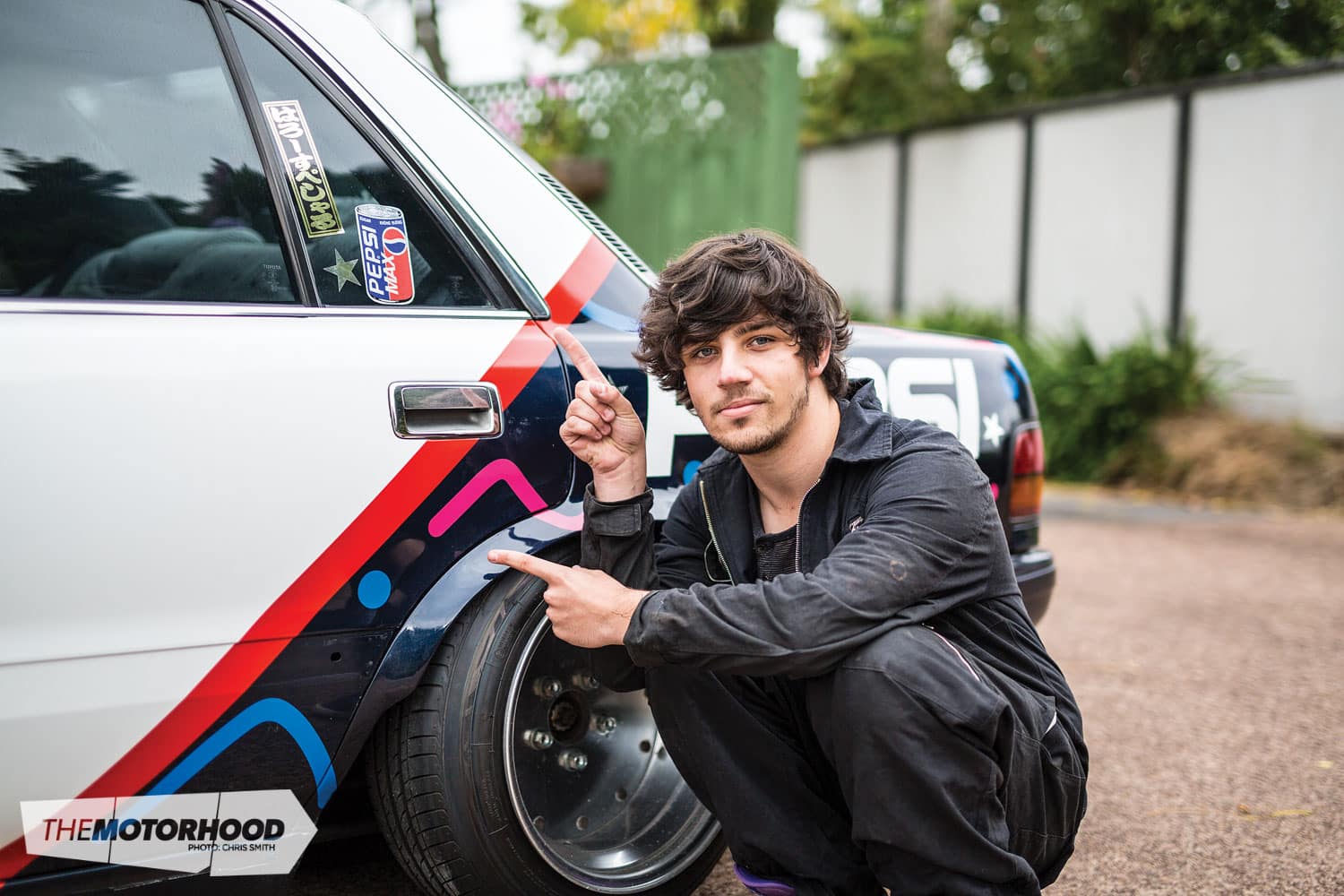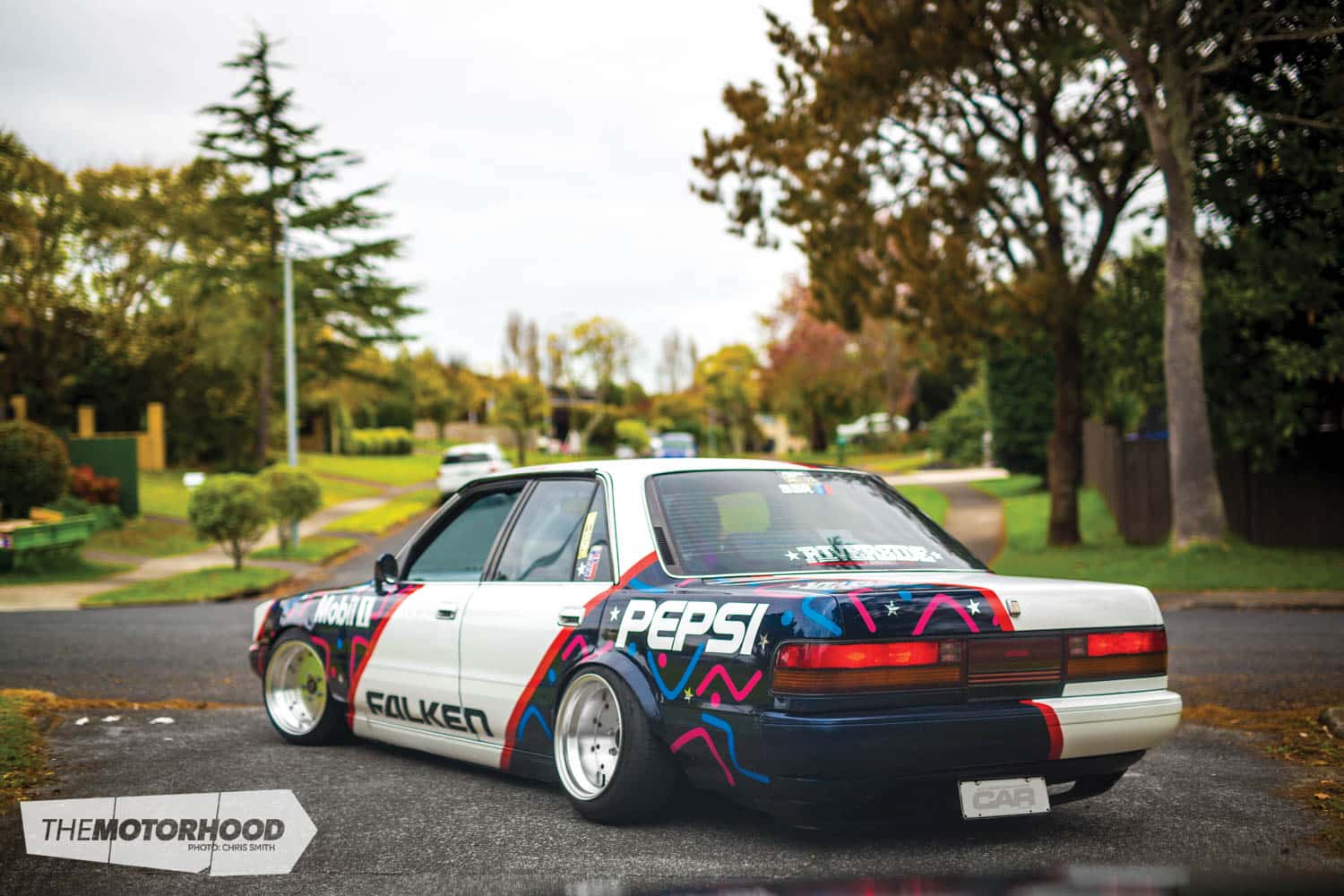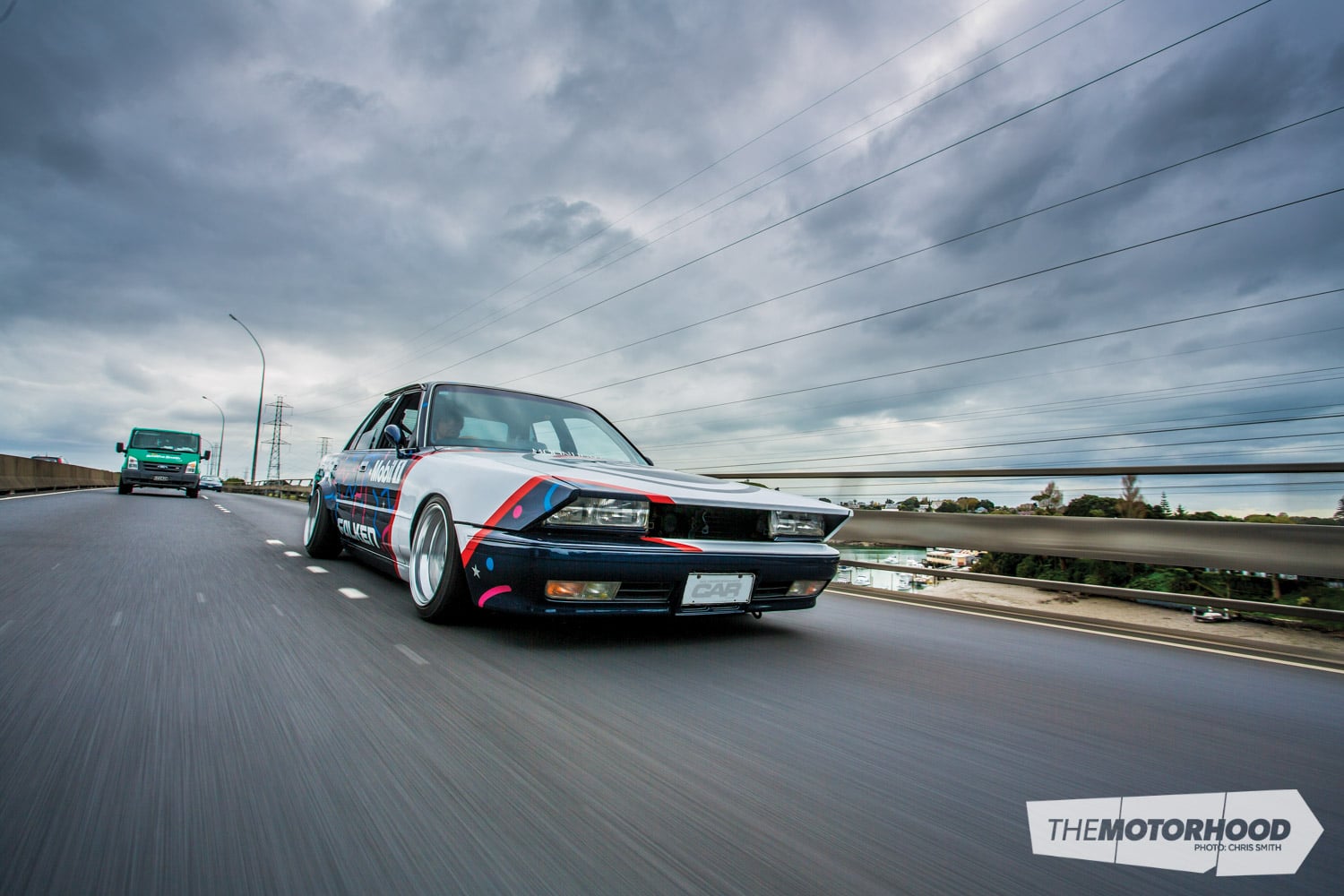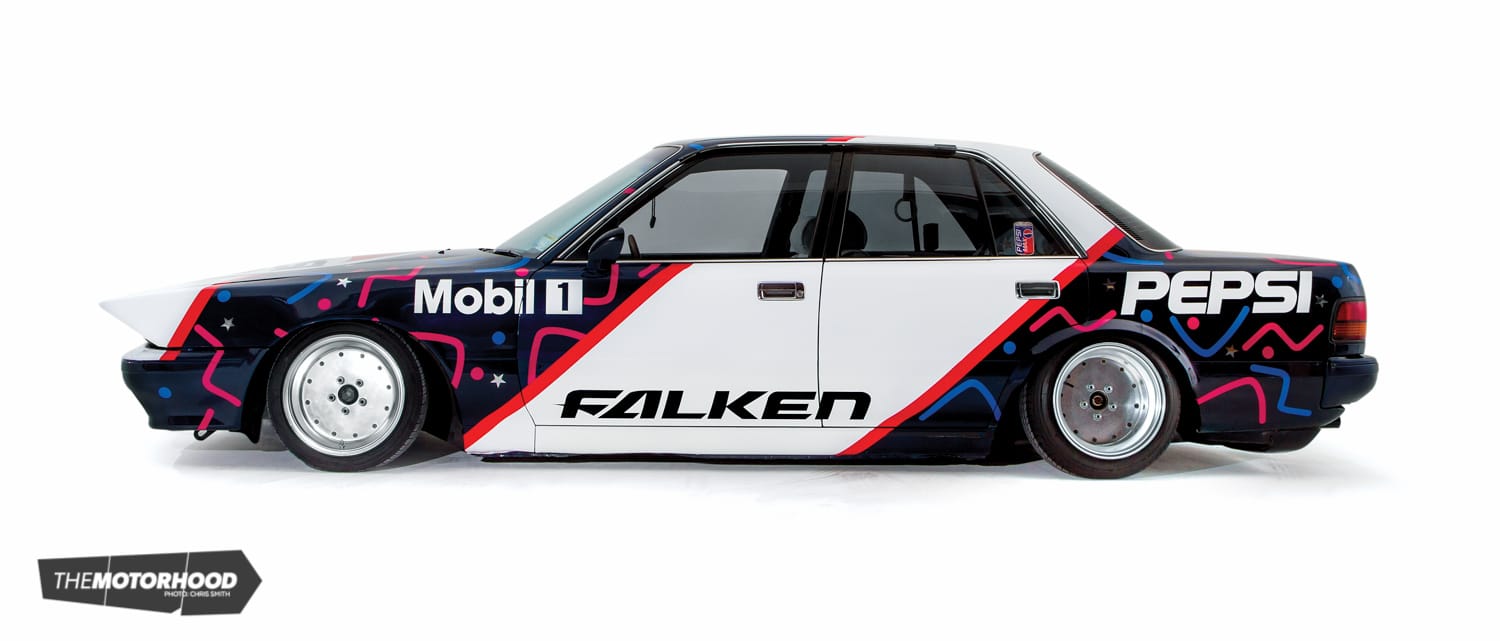data-animation-override>
“Fukuoka style hits New Zealand with Michael Macnaughtan’s Toyota Mark II ”
Early adopters are like entrepreneurs of the automotive world. They forge ahead of the game doing things that most would not dare, stepping out of the communal comfort zone and into the world of the unknown, and bravely standing out like a sore thumb in this day and age of instant online social ridicule. Although funnily enough that same online world often plays a role in spurring on these forgers of new styles here on local soil.
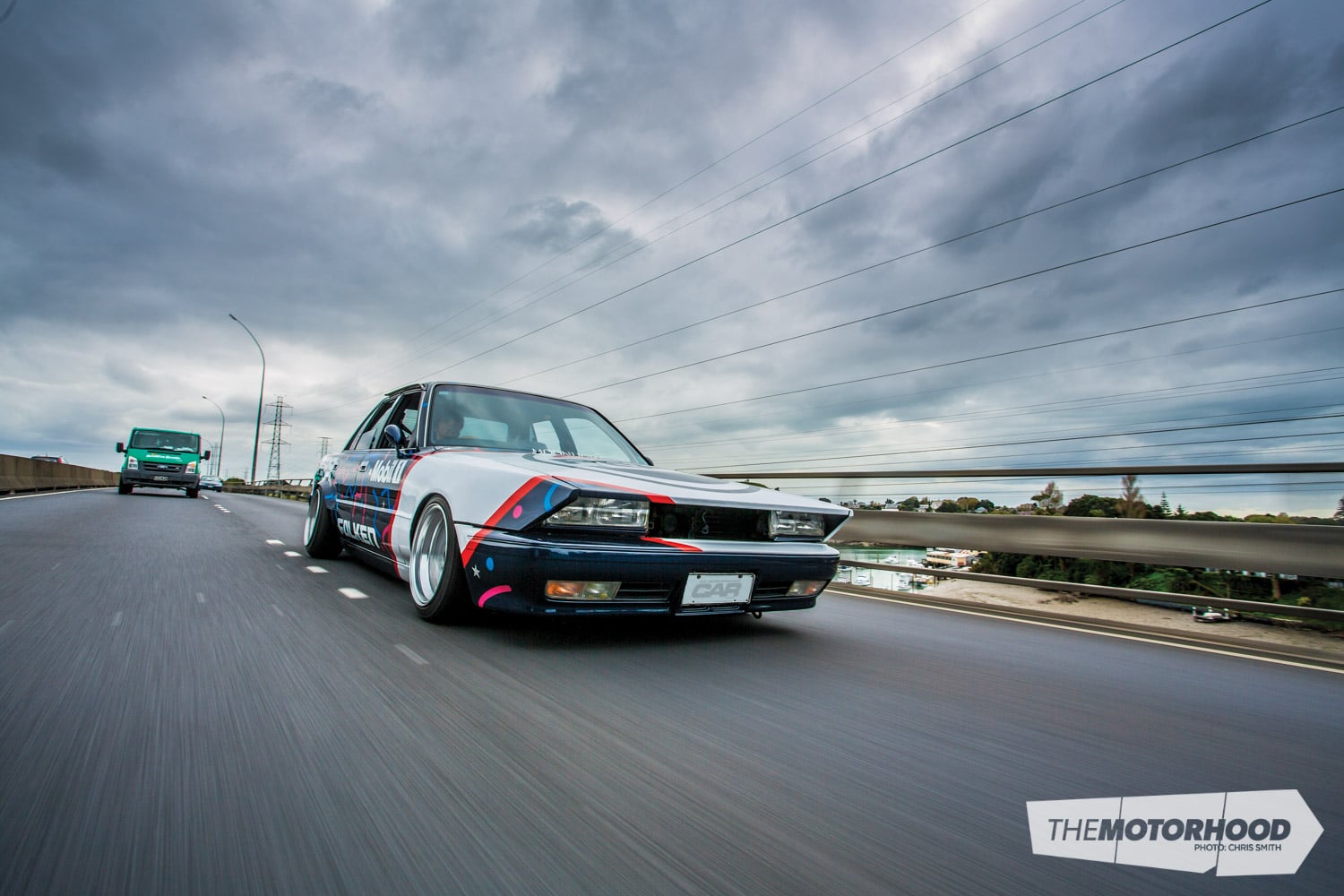
Born from the Japanese underground, Kaido Racers are nothing new in their native country, and have gained a legendary status worldwide, but surprisingly few have dared to replicate the style outside its native homeland. Which is something that didn’t stop Michael Macnaughtan, as he told NZ Performance Car.
“I had seen the pictures of the style forever, and thought maybe, just maybe, I could do it within a budget. I thought I would be dropping it off to a panel beater to achieve, but a friend — Kurt — who has fab skills offered his time. We picked up the materials cheap, along with a spare set of fenders and a bonnet, and began from there. I then had another mate Alpha, who I met through doing the long nose, who offered to help me with the bog work.”
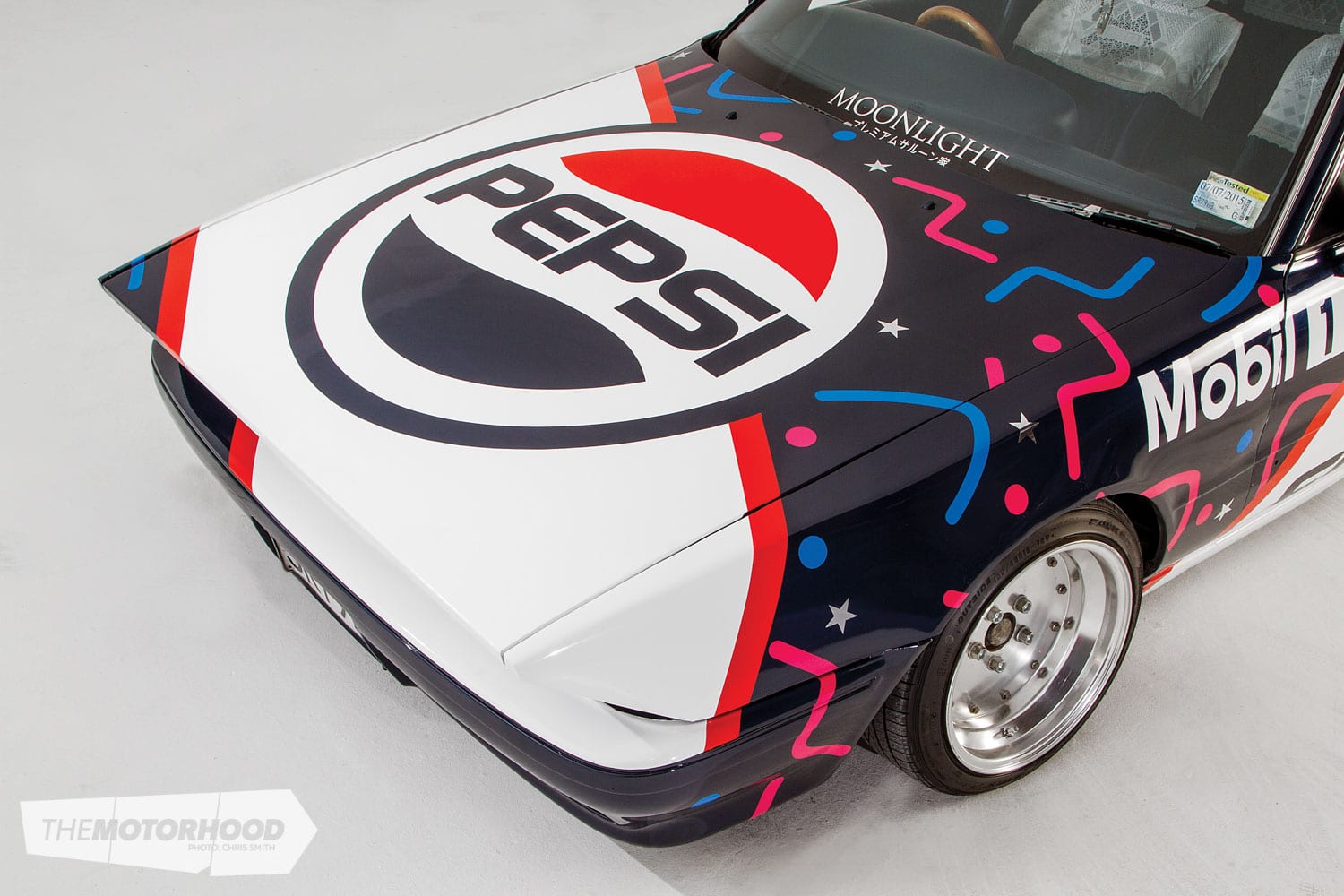
Michael’s project first caught our eye early last year, not only for the fact it’s one of the first long noses we have seen attempted in New Zealand, but for the fact the young uni student was giving it a go in his mum’s garage along with the help of some mates. Armed with nothing more than a bunch of images, Michael and Kurt went to work extending the bonnet and guards. Michael tells us it’s just one of those things you have to start, and take it from there — pick your design and work it out as you cut and weld the steel into submission.
A local panel beater did eventually get his hands onto the Mark II, pouring in 14 hours to get the front end as straight as possible. You may have seen the car at the V 4&Rotary Nationals earlier in 2015 with the front end in primer.
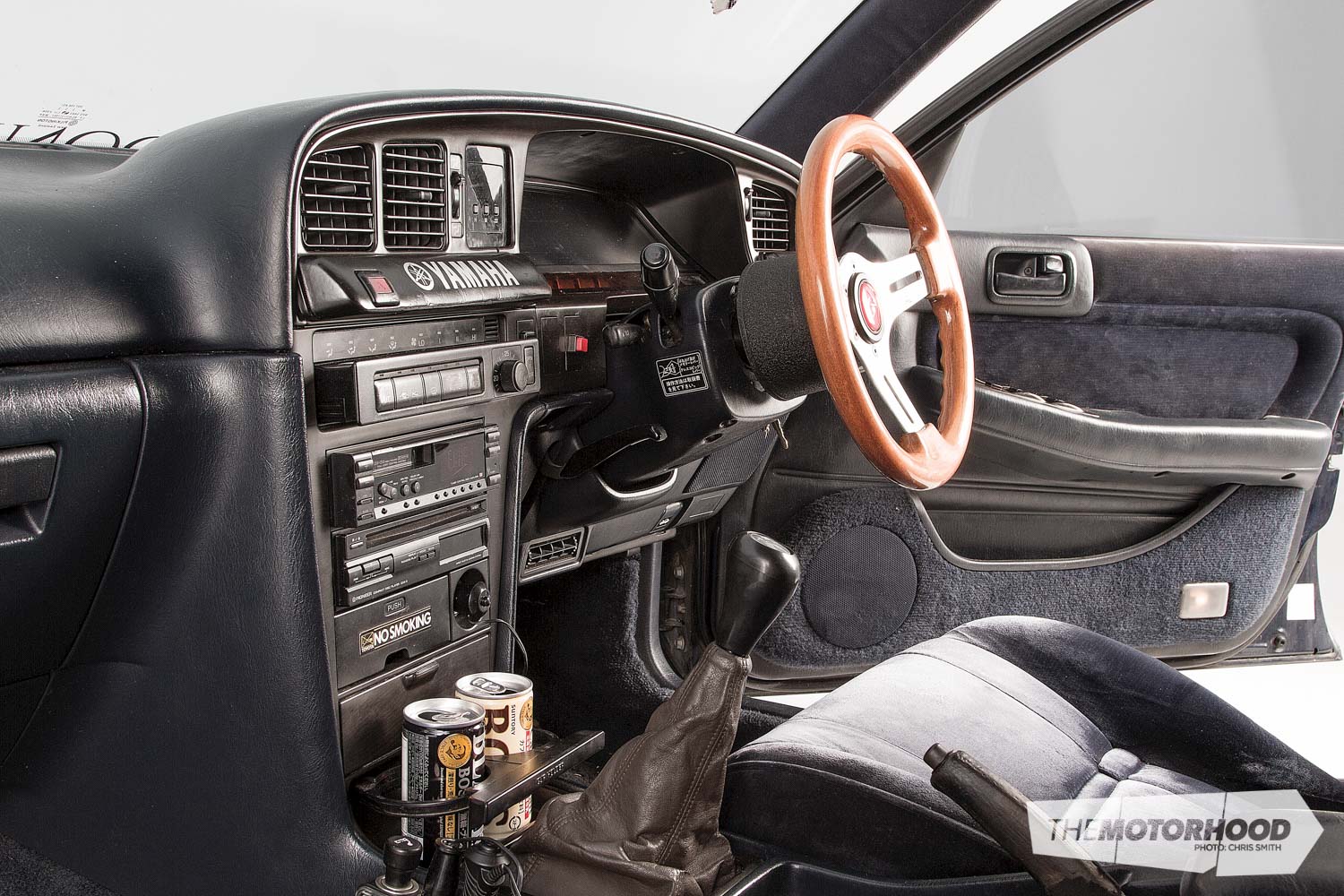
It was at the Nationals that the idea for the Pepsi livery popped up. “A mate, Alpha, pointed out that the car — which at the time was blue and primer — was in Pepsi colours, and suggested I have a go at a Pepsi livery. I had a talk to a few signwriters at the Nats about getting it done, and found out that it wouldn’t actually be that expensive, so I decided to give it a go and design it up.”
Taking inspiration from things like a ’90s pop-art Pepsi can, believe it or not Michael actually put together the design himself using none other than Forza. No fancy design programme was used here. Once he was happy with the design, the Mark II was handed over to Big Brown Industries to lay on the vinyl.
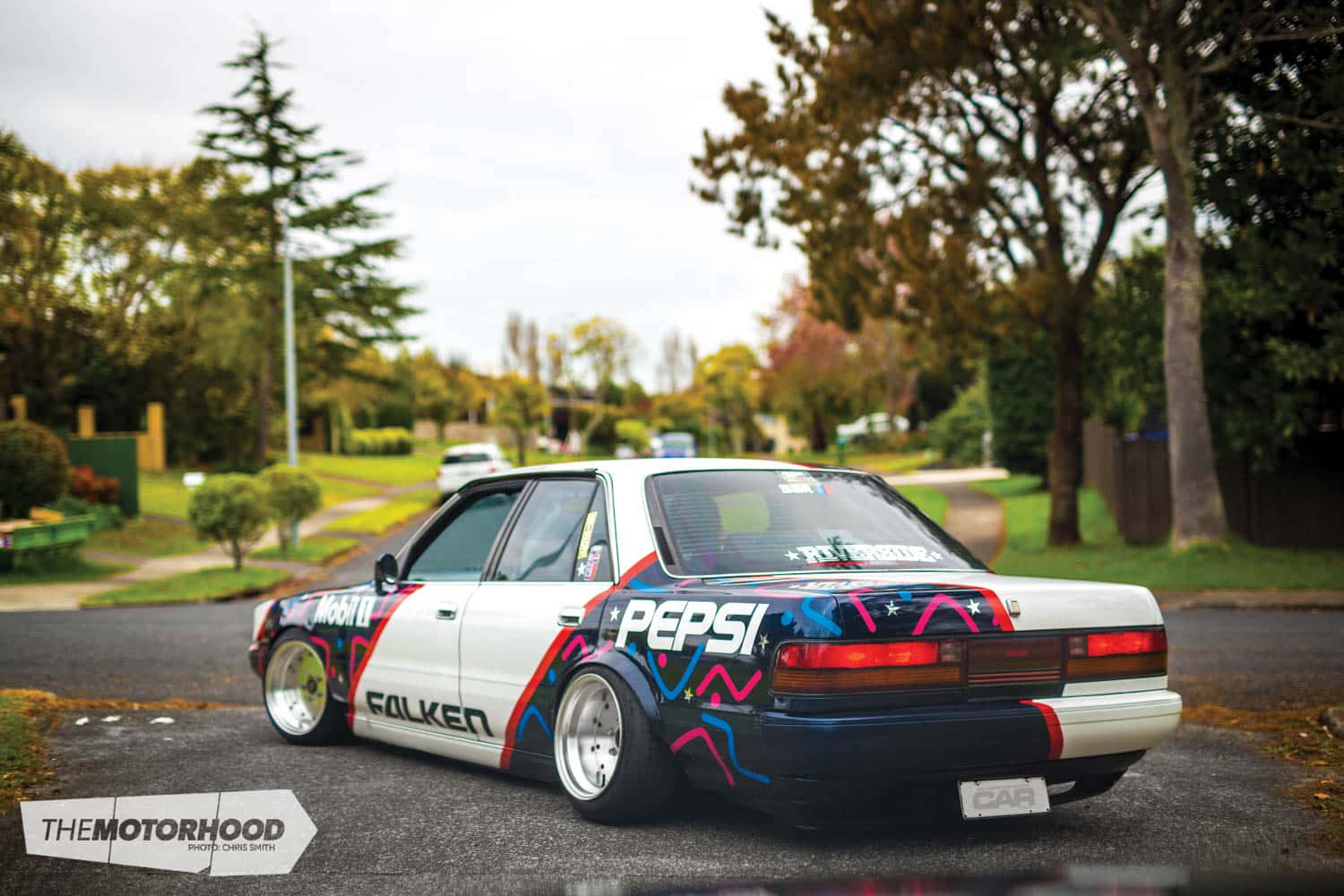
While most would agree that Michael has nailed the Kaido look, the other area that he really took strides to nail is the exhaust note, because if there is one thing that Kaido Racers are known for it’s their late-night rev-limiter bashing, often referred to as bamboo spear calls. It’s not easy getting that note right, as Michael found out.
“Firstly I tried a couple of straight pipes, and it wasn’t even close. So at the start of 2014 I picked up a set of Trust TR headers — the blue ones. They are easy to get, and pretty common. I ran those for a bit with a single two-inch straight pipe. I liked the sound, but they are not equal-length headers so you don’t quite get that high-performance sound, you get a good rasp, but I wanted to take it a step further. At the beginning of this year I started toying with the idea of running Mizuno Works headers. They are probably the most premium-priced headers you can buy. They are TIG welded to order, and I think I’m the first person in the western world to buy them.”
Bad-arse headers alone were not enough to nail the sound, so Wolf Mufflers put together the complete system, with twin two-inch pipes to about halfway down the car, then into a single one-inch pipe and very small resonators.
For a stock (non-exotic) engine the car sounds amazing. This is one of those times we wish the magazine was an audiobook so we could share the sound with you, it’s just that good. And with the future engine modifications planned it’ll only get better once the engine is breathing a little more with some ITBs, new cams, and possibly a capacity increase to 2.4.
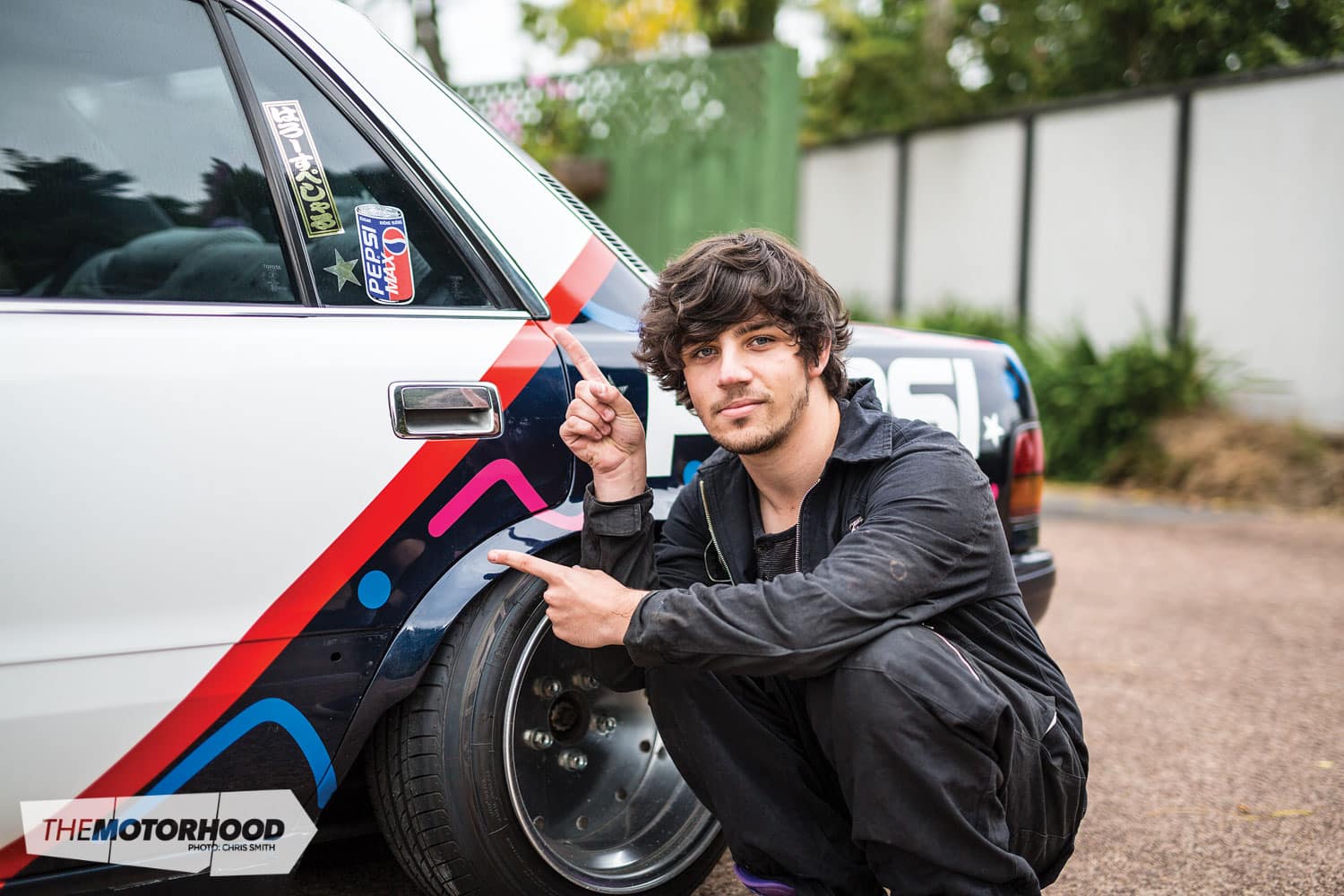
We were surprised to find out just how much Michael gets out and about in the Mark II, a car that is essentially illegal due to a ride height that really is catseye-killing low. But as he puts it, the car has to be illegal to essentially have it looking cool, there is just no way around it.
“You can’t care about legality, it’s not a car you would drive every day, it’s not a car you would drive to work, obviously the ride height stops all of that, driveways, speed bumps everything.” But we tend to think that’s part of the charm of a machine so illegal it’s outlaw, and so impractical that most would never dare own such a vehicle. So perhaps this is why only a handful of people build cars like this outside Japan, not that Michael doesn’t dream of more people here replicating the style.
“Whenever you see these cars on YouTube or whatever, they are always rolling together in a large group, doing Os, being rowdy and loud. At the moment I’m pretty certain I’m one of maybe five or six cars that are going this style. Obviously more will happen, but at the moment it’s very limited, and they are spread all over the country.”
But until that day Michael will have to be content with causing just a little bit of a ruckus wherever his 20mm ride height will allow him to go.
1988 Toyota Mark II Grande (GX81)
Exterior
- Paint: Custom livery designed by Michael and applied by Jerry at Big Brown Industries, 35-per-cent tints
- Enhancements: Custom long-nose welded and sectioned by Kurt Saggers (finishing by Sinclair Collision Repair, Howick), GX81 Cresta bumper and headlights, deleted grille, split spoiler, Californian-style mirrors, relocated rear number plate with A31 Cefiro garnish
Interior
- Seats: Factory with Toyota half-cover option
- Steering wheel: OBA 300mm woodgrain
- Instrumentation: GX81 Cresta digital panel
- Ice: Pioneer KEH770 control unit / tape, Pioneer CDX-3 CD player, Pioneer GEX-T50 tuner, Pioneer GM-4 amp, Pioneer Carrozzeria TS-X66 II 120-watt speakers with illumination
Support
- Struts: (F) Kei Office coilovers, modified factory knuckle, 12kg spring (R) Kei Office coilover, 10kg spring
- Brakes: Factory
- Other: Yanack lower rear arms, Xcessive lower arm bushes
Drive
- Gearbox: W55 five-speed
- Clutch: Exedy Sport Clutch
- Flywheel: Factory
- Diff: Factory
Shoes
- Wheels: (F) 15×8-inch (+12) SSR MKI (B Disk) (R) 15×9-inch (-26) SSR MKI (A Disk), Plasti Dip dipped
- Tyres: (F) 195/45R15 Falken Ziex ZE912 (R) 175/60R15 Linglong Green-Max
This article was originally featured in a previous issue of NZ Performance Car. Pick up a copy of the edition here:





